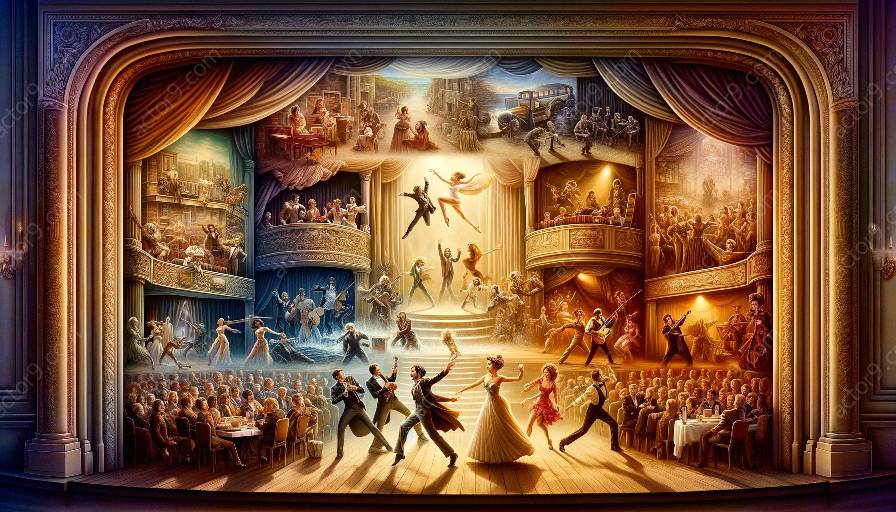Musical theatre styles and genres encompass a wide range of expressions and influences that have evolved over time and reflect the diverse cultural background and artistic creativity. From classic Broadway musicals to avant-garde experimental pieces, the world of musical theatre offers a rich tapestry of styles that captivate audiences and provide a platform for performers to showcase their talent.
Understanding Musical Theatre
Musical theatre is a form of theatrical performance that combines songs, spoken dialogue, acting, and dance to tell a story. It has its roots in various traditions, including opera, vaudeville, and African American musical styles such as jazz and blues. The synthesis of these elements has given rise to a plethora of musical theatre styles and subgenres, each with its own unique characteristics and artistic appeal.
Broadway Musicals
The term 'Broadway musical' often conjures images of glittering stages and soaring anthems. These iconic productions have a distinct style characterized by show-stopping numbers, intricate choreography, and emotionally charged storytelling. Broadway has been a breeding ground for timeless classics like "The Phantom of the Opera," "Les Misérables," and "West Side Story," as well as contemporary hits like "Hamilton" and "Dear Evan Hansen." The enduring popularity of Broadway musicals attests to their enduring appeal and cultural significance.
Classical Musical Theatre
Classical musical theatre represents the traditional form of musical storytelling that first emerged in the 19th and 20th centuries. These productions, often characterized by lush orchestrations and romantic melodies, have become a foundational pillar of the musical theatre canon. Works like "The Sound of Music," "My Fair Lady," and "The King and I" exemplify the timeless charm and enduring appeal of classical musical theatre.
Rock and Pop Musicals
With the advent of rock and pop music, a new wave of musical theatre emerged, blending the energy and rebellious spirit of these genres with the narrative power of theatre. Iconic rock musicals like "Rent," "Jesus Christ Superstar," and "Hedwig and the Angry Inch" have pushed boundaries and broadened the scope of musical storytelling, appealing to diverse audiences and challenging conventional norms.
Experimental and Avant-Garde Theatre
Embracing innovation and unconventional storytelling, experimental and avant-garde musical theatre genres push the boundaries of traditional norms, exploring new forms of expression and artistic interpretation. These productions often incorporate multimedia elements, non-linear narratives, and abstract themes, offering audiences a thought-provoking and immersive theatrical experience.
Musical Theatre in Comparison to Other Performing Arts
While musical theatre is a distinct and vibrant art form, it is also closely related to other performing arts such as acting and theater. The fusion of music, storytelling, and dramatic performance in musical theatre distinguishes it from traditional plays and acting performances, offering a unique synthesis of artistic expression. However, the boundary between musical theatre and other performing arts is fluid, with some productions blurring the lines and incorporating elements from different disciplines to create compelling and multidimensional performances.
Conclusion
Exploring the diverse styles and genres of musical theatre reveals the richness and complexity of this captivating art form. Whether it's the grandeur of Broadway, the timeless charm of classical musicals, the edginess of rock and pop productions, or the avant-garde experimentation, musical theatre continues to evolve and captivate audiences worldwide. By understanding the nuances of its various styles and uncovering their cultural and artistic significance, we gain a deeper appreciation for the immense creativity and talent that define musical theatre.




































